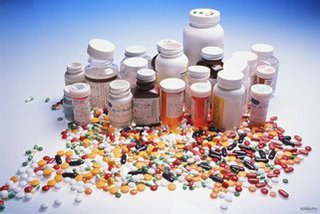Prevention and treatment of mastitis in goats

Often, mastitis in goats begins without obvious symptoms, but as it progresses, it quickly becomes acute. Inflammation, swelling, and pain increase as bacteria enter the mammary gland, causing the lactating goat to drive off the young and kick the owner when milking.
Mastitis refers to inflammation of the udder. It is important to detect the problem in time. If the goat's mammary glands suddenly harden and swell, redness appears around the nipple, take the temperature with a rectal thermometer: a temperature of 40.5 degrees and above, accompanied by a rapid pulse, indicates mastitis, as well as watery yellowish MILK , which quickly separates and folds when removed a few drops.
The normal temperature range for goats is 38 to 39 plus or minus half a degree. A temperature higher indicates an infection.
There are several causes of mastitis in goats.
Physical injury, including bruising of mammary tissue as a result of feeding goats with a tendency to butt heads.
Viruses that infect the mammary gland, creating the so-called "hard udder". Viral mastitis leads to a significant decrease in milk production and a dense, infected udder with loose skin from swelling.
Bacteria Streptococcus sp., Staphylococcus sp., Pasteurella sp., coliforms E. Coli.
Only laboratory analysis can confirm which bacteria cause mastitis. However, hygienic housing conditions and milking practices, as well as proper housing and care of animals, contribute greatly to the prevention of bacterial mastitis.
Mycoplasma infections, primarily M. mycoides (large colonies) and M. putrefaciens, sometimes cause serious outbreaks of mastitis in goats. The latter pathogen also causes septicemia, polyarthritis, pneumonia and encephalitis, severe illness and mortality in kids.
Gram-negative organisms cause intermittent infections, which can be severe but usually resolve on their own. Trueperella (formerly Arcanobacterium) pyogenes sometimes causes multiple nodular abscesses.
Mastitis in goats can be clinical, which is easily diagnosed based on obvious symptoms such as clots or whey in the milk and swollen, hot udders, and subclinical, which requires a specific veterinary test.
In subclinical mastitis, there is no swelling or noticeable change in the milk, which is why it is so difficult to detect. The most reliable test for diagnosis is microbiological culture, which allows to determine the cause of the infection from only one milk sample.
The treatment protocol will be based on a microbiological culture of the milk.
Possible methods include treatment during the dry period. At this time, subclinical mastitis can be cured and the number of somatic cells can be controlled. Usually used inside the udder infusion of a two percent solution of chlorhexidine twice a day for five to ten days.
There are no approved antibiotics available for goats to treat mastitis, so if necessary, antibiotic therapy should be administered under the supervision of a veterinarian.
In some cases, corticosteroids are also prescribed. They can reduce breast swelling, especially if intervened at an early stage, before the disease has begun to progress. Ointments that are used to treat mastitis in cows can also be applied to goats, since the organisms that infect the udder of female goats are similar to those in cows.
Hoof hygiene must be monitored as foot rot is often associated with mastitis.
Goats should be dehorned to prevent accidents and injuries.
Practice good milking hygiene and be sure to check the udder before milking for signs of swelling.
Read together with it:
- An HSE expert reported on the "evolution of inequality" in access to healthcare.An HSE researcher analyzed Russians' access to healthcare over a ten-year period. In 2021, the influence of financial factors became noticeable for the first time: low income reduces the likelihood of visiting a DOCTOR.Over the ten years from 2011 to 2021, the number of Russians requiring medical care but not receiving it remained virtually unchanged, according to a study by Lyudmila Zasimova, hea...
- He crawled to the icon with prayer. The true story of a man who overcame drug addiction.Alexander Ovchinnikov. Topic News. Our project's hero was a drug addict for many years. The thought that this was a dead end never left him, but his addiction proved stronger. One day, when he could no longer walk, he crawled to an icon in prayer. This became his first step toward a new life. Today, he heads a charity center that helps those who have given up hope and are unable to quit ALCOHOL an...
- Rosselkhoznadzor has banned meat imports from two Belarusian enterprises due to violations.In addition, three other Belarusian producers are now subject to strict laboratory monitoring due to initial deviations: azithromycin was found in poultry MEAT from Druzhba Poultry Farm, and the pesticide imidacloprid was found in honey from Pchalyar Polachchyny Farm. Powdered MILK from Luninetsky Dairy Plant was also found to containcoli bacteria . These measures were taken at the request of the ...
- Pharmaceutical companies see a threat to EU security due to bacteria in UkraineAntibiotic-resistant superbugs have been detected in Ukrainian soldiers since the beginning of the conflict, and now they pose a threat to Europe, according to a foundation developing antibiotics.The Ukrainian conflict threatens Europe with antibiotic-resistant "superbugs," said Henry Skinner, CEO of the AMR Action Fund, which specializes in investing in antimicrobials. His article was published o...
- Брянская область вошла в число лидеров среди регионов России по товарообороту на БУТБ12 ноября, Минск. Брянская область вошла в число лидеров среди регионов России по товарообороту на Белорусской универсальной товарной бирже. Об этом сообщили БЕЛТА в пресс-службе БУТБ.Согласно данным о сделках, заключенных резидентами РФ на Белорусской универсальной товарной бирже в январе - октябре 2......
- Роспотребнадзор подводит итоги контроля мясной продукции в Тамбовской области за 2025 годПоложительные аспекты: Не было выявлено нарушений санитарно-химических показателей, присутствия патогенных микроорганизмов, ГМО, паразитов, антибиотиков и радиационного загрязнения. Проблемные моменты: Отмечается ухудшение по физико-химическим показателям — 5,88% образцов не соответствует стандартам, по сравнению с 1,5% в 2......


